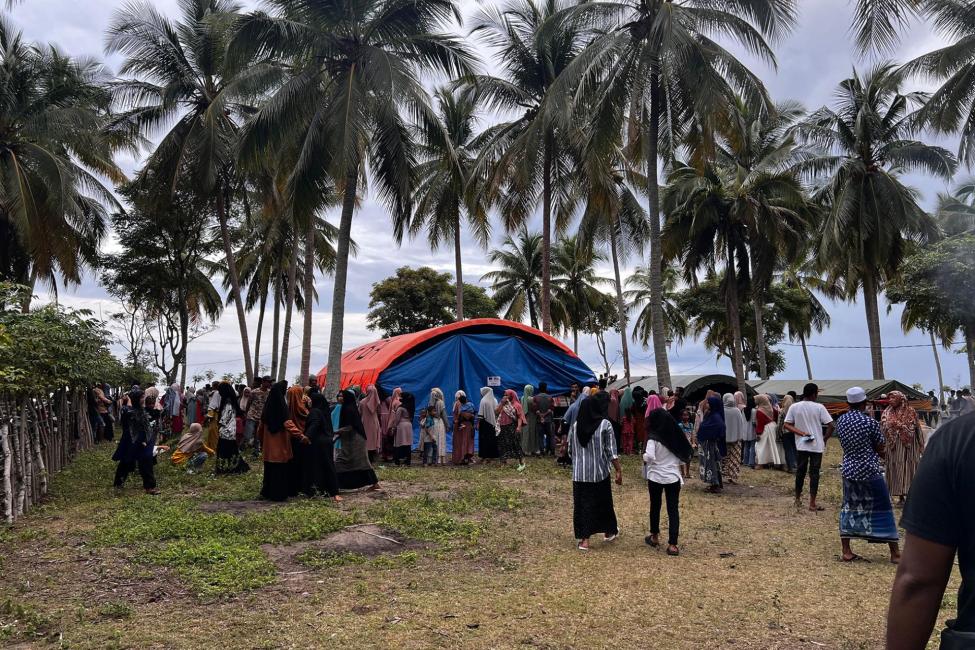-
Who we are
WHO WE AREThe International Organization for Migration (IOM) is part of the United Nations System as the leading inter-governmental organization promoting since 1951 humane and orderly migration for the benefit of all, with 175 member states and a presence in over 100 countries. IOM joined the United Nations system in September 2016.
About
About
IOM Global
IOM Global
-
Our Work
Our WorkAs the leading inter-governmental organization promoting humane and orderly migration, IOM plays a key role to support the achievement of the 2030 Agenda through different areas of intervention that connect both humanitarian assistance and sustainable development.
Cross-cutting (Global)
Cross-cutting (Global)
- Data and Resources
- Take Action
- 2030 Agenda
IOM Hackathon Bridges Data Gaps on Climate Change and Migration
Nairobi – The International Organization for Migration (IOM) hosted the first hackathon on “Bridging Climate Change and Human Mobility”, in collaboration with the Data Cloud company, Snowflake, to provide insights on the intersection of environmental factors with migration management and policymaking in the East and Horn of Africa (EHoA).
The two-part hackathon brought together participants in London (6-7 October) and Nairobi (23-26 October) to explore data-driven solutions and improve understanding of the complex relationship between climate change, disasters, environmental degradation, and human mobility in the region.
The initiative brought together 50 participants from various sectors including the tech industry and academia such as Microsoft, the University of Liverpool, the London School of Economics and the Addis Ababa University who work in areas critical to addressing climate migration in the EHoA region.
“We are thrilled to host this hackathon and, with Snowflake’s help, transform ideas into action, while harnessing the potential of data to address climate change and mobility challenges,” said Laura Nistri, IOM’s Displacement Tracking Matrix Global Coordinator at the event’s kick-off. “Human mobility must be integrated into national climate adaptation plans,” she added.
Participants in Nairobi presented different analytic approaches tested on 70 different datasets to explore the feasibility of modeling the links between different drivers of mobility in the region. In addition, participants explored the use of new technologies, including telecom data and machine learning for analysing migration flows and identifying new indicators.
Djibouti, Eritrea, Ethiopia, Kenya and Somalia continue to experience climatic shocks including the longest and most severe drought in over 40 years with intermittent flooding putting a strain on livelihoods, rain-fed agriculture, ecosystem services and people’s resilience as well as increasing forced migration and related vulnerabilities. As of June 2023, 3 million people are internally displaced due to drought across these countries, with an estimated 6.6 million internally displaced people living in drought-affected areas.
“Together with IOM, and with the power of modern cloud data platforms, we can use deep data insights to rapidly create a more accurate picture of the impact of climate change on migration,” said Fawad Qureshi, Global Industry Field CTO, Snowflake. “We are experiencing a world that is undergoing seismic climate changes, and IOM’s hackathon is a springboard to better understand its impact on migration trends, and finding solutions that can positively impact lives.”
Following the event, IOM and Snowflake will produce a comprehensive report and white paper synthesizing the results, to be published in the lead-up to COP28.
For more information, please contact:
Jorge Galindo, IOM’s Global Data Institute, Email: jgalindo@iom.int
Yvonne Ndege, IOM’s Regional Office in Nairobi, Email:yndege@iom.int

